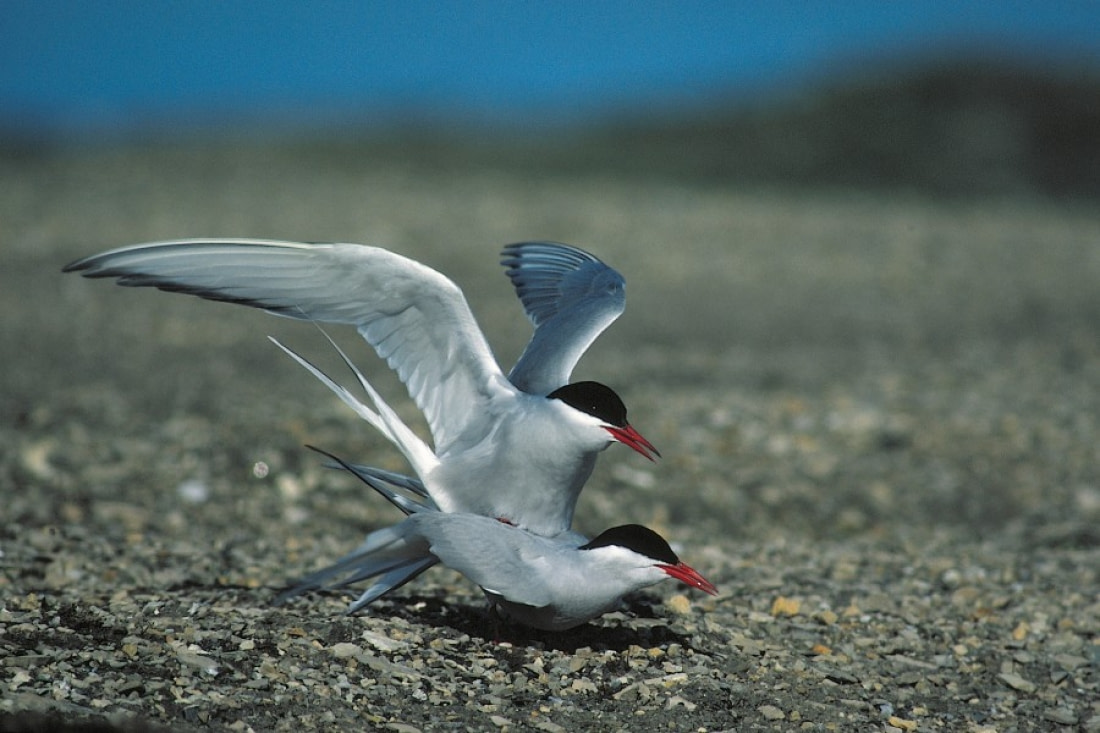Name: Arctic Tern (Sterna paradisaea)
Length: 25 - 40 cm (10 - 16 inches)
Wingspan: 65 - 75 cm (25 - 30 inches)
Weight: 85 - 125 grams (3 - 4.5 ounces)
Location: Arctic and Antarctica
Conservation status: Least Concern
Diet: Fish, crustaceans
Appearance: Grey and white with a black cap on their heads, and a red bill

How do Arctic terns feed?
Arctic terns fish by dive-bombing the water.
Are Arctic terns social?
They live in large colonies and communicate through various social calls.

How fast do Arctic terns fly?
Arctic terns fly at about 35 to 40 kph (22 to 25 mph).
What are Arctic tern mating rituals like?
Arctic terns become sexually mature around three years old and mate for life. They return to the same colony every year. Courtship begins with the female chasing the male in the "high flight," followed by the male presenting fish to the female. The pair then strut and posture with wings open on the ground.

They build nests in small ground depressions. Males fish for their mates while females lay 1-3 eggs. Both parents defend the nest fiercely and take turns incubating the eggs, which hatch after 3-4 weeks. Chicks, or fledglings, learn to fish on their own after about a month.
How long do Arctic terns live?
Arctic terns live about 20 to 30 years in the wild.
How many Arctic terns are there today?
In 2015, Wetlands International estimated over 2,000,000 Arctic terns, though their population is thought to be decreasing.
Do Arctic terns have any natural predators?
Eggs, chicks, and adults are vulnerable to foxes, cats, and large birds like skuas, gulls, and petrels.

Seven interesting Arctic tern facts
- Arctic terns experience two summers each year and get more daylight than any other animal.
- They have one of the longest migratory routes, traveling over 90,000 km (55,900 miles) per year.
- In their lifetimes, they travel about 2.4 million km (1.491 million miles), equivalent to three round-trips to the Moon.
- Before taking flight, an Arctic tern colony grows silent, a moment called the "dread."
- They glide much of the time during migration and can even sleep while gliding.
- Arctic terns can hover, similar to hummingbirds.
- They take long detours during migration to find better feeding grounds or avoid bad weather.











 23 Days / 22 Nights
23 Days / 22 Nights



